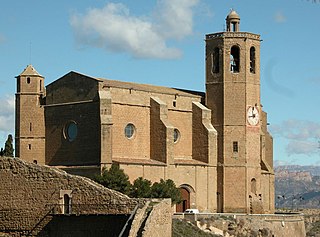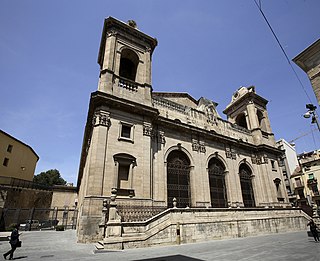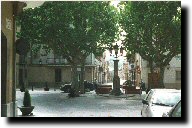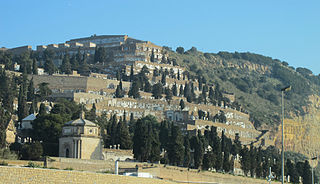The University of Barcelona is a public research university located in the city of Barcelona, Catalonia, Spain. It was established in 1450. With 76,000 students, it is one of the biggest universities in Spain and has also been ranked 1st in the country in most of the 2024 rankings.

Reus is the capital of Baix Camp, in Camp de Tarragona, Catalonia, Spain. The area has always been an important producer of wines and spirits, and gained continental importance at the time of the Phylloxera plague. Currently it is known for its commercial activity, for being a centre for rock-climbing and as the birthplace of architect Antoni Gaudí.

Balaguer is the capital of the comarca of Noguera, in the province of Lleida, Catalonia, Spain. It is located by the river Segre, a tributary to the Ebro. The municipality includes an exclave to the east. Balaguer also has a sister city in the western United States, Pacifica, California.

La Pobla de Segur is a municipality located in the comarca of Pallars Jussà, province of Lleida, Catalonia, in northern Spain. According to the 2013 census (INE), the town has a population of 3,073 inhabitants. It is situated at the confluence of the Flamicell and Noguera Pallaresa rivers in the north of the comarca, above the Sant Antoni reservoir. It is an important local service centre, which has allowed it to escape the depopulation which has affected many municipalities in northwestern Catalonia. The village is served by the C-13 road between Tremp and Sort, the N-260 road to Pont de Suert and by a railway station on a railway line to Lleida.

The Museu Nacional d'Art de Catalunya, abbreviated as MNAC, is a museum of Catalan visual art located in Barcelona, Catalonia, Spain. Situated on Montjuïc hill at the end of Avinguda de la Reina Maria Cristina, near Pl Espanya, the museum is especially notable for its outstanding collection of romanesque church paintings, and for Catalan art and design from the late 19th and early 20th centuries, including modernisme and noucentisme. The museum is housed in the Palau Nacional, a huge, Italian-style building dating to 1929. The Palau Nacional, which has housed the Museu d'Art de Catalunya since 1934, was declared a national museum in 1990 under the Museums Law passed by the Catalan Government. That same year, a thorough renovation process was launched to refurbish the site, based on plans drawn up by the architects Gae Aulenti and Enric Steegmann, who were later joined in the undertaking by Josep Benedito. The Oval Hall was reopened for the 1992 Summer Olympic Games, and the various collections were installed and opened over the period from 1995 to 2004. The museum was officially inaugurated on 16 December 2004. It is one of the largest museums in Spain.

The Diocese of Lleida, or Diocese of Lerida is a Latin Church diocese of the Catholic Church located in north-eastern Spain, in the province of Lleida, part of the autonomous community of Catalonia. The diocese forms part of the ecclesiastical province of Tarragona, and is thus suffragan to the Archdiocese of Tarragona.

Sant Vicenç de Castellet is a municipality in Bages county in Catalonia, Spain. It is situated near the confluence of the Llobregat river and the Cardener river. The two railway stations, in close proximity to each other, serve the FGC line R5 between Barcelona and Manresa, and the Renfe line between Barcelona and Zaragoza via Manresa and Lleida, served by Rodalies lines R4 and R12. The C-1411 road links the municipality with Martorell and Manresa.

Ponts is a municipality and a town in the comarca of the Noguera in the province of Lleida, Catalonia, Spain. It is situated on the left bank of the Segre river near its confluence with the Llobregós river and at the point where the routes from Calaf and Cervera meet the route from Lleida to La Seu d'Urgell.
Spanish comics are the comics of Spain. Comics in Spain are usually called historietas or cómics, with tebeos primarily denoting the magazines containing the medium. Tebeo is a phonetic adaptation of TBO, a long-running (1917–1983) Spanish comic magazine, and sounds like "te veo".

Santa Maria de Montserrat is an abbey of the Order of Saint Benedict located on the mountain of Montserrat in Monistrol de Montserrat, Catalonia, Spain. It is notable for enshrining the image of the Virgin of Montserrat. The monastery was founded in 1025 and rebuilt between the 19th and 20th centuries. With a community of around 70 monks, the abbey is still in use to this day.

Montjuïc Cemetery, known in Catalan as Cementiri del Sud-oest or Cementiri de Montjuïc, is located on one of the rocky slopes of Montjuïc hill in Barcelona.

Mas is a surname of Catalan and Occitan or North German and Dutch origin. It accounts for 0.068% of the population in Spain, with 0.879% found amongst Catalans, and 0.017% in France.

Prats i Sansor is a municipality in the comarca of Cerdanya, province of Lleida, Catalonia, Spain. It is composed by four villages, Prats, Sansor, Capdevila and El Pla.
The Premi d'Honor de les Lletres Catalanes is an award instituted by Omnium Cultural since 1969 to recognize a person by their scientific or literary work, written in Catalan language, the importance of their work and his/her significant contribution to cultural life of the Catalan Countries.

Pere Macias i Arau is a Catalan politician, former deputy to the Parliament of Catalonia and to the Parliament and senator.

Francoism in Catalonia was established within Francoist Spain between 1939 and 1975, following the Spanish Civil War and post-war Francoist repression. Francisco Franco's regime replaced Revolutionary Catalonia after the Catalonia Offensive at the end of the war. The dictatorship in Catalonia complemented the suppression of democratic freedoms with the repression of Catalan culture. Its totalitarian character and its unifying objectives meant the imposition of a single culture and a single language, Castillian. The regime was specifically anti-Catalan, but this did not stop the development of a Catalan Francoism that was forged during the war and fed by victory.
Events of 2019 in Spain.

La Veu de Catalunya was a Catalan newspaper founded by Enric Prat de la Riba that was published in Barcelona from 1 January 1899 to 8 January 1937, with two editions daily.